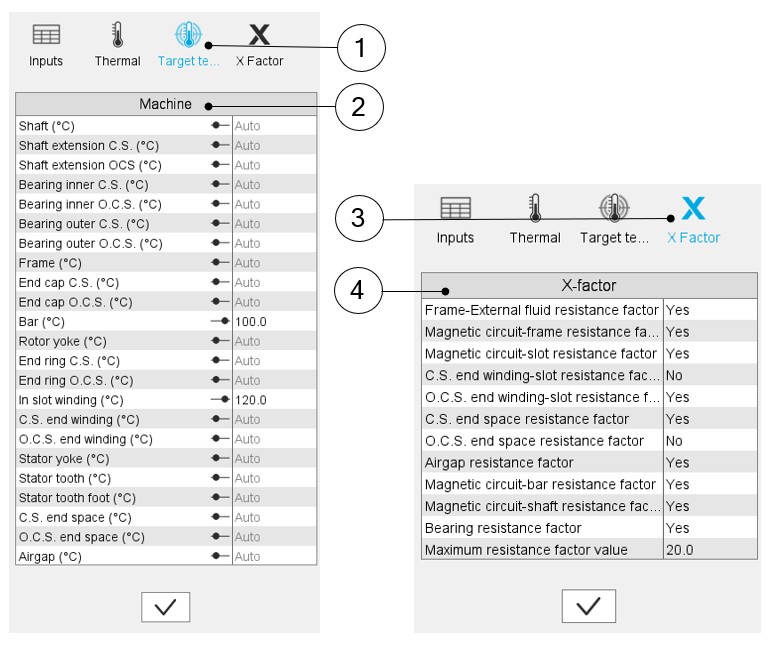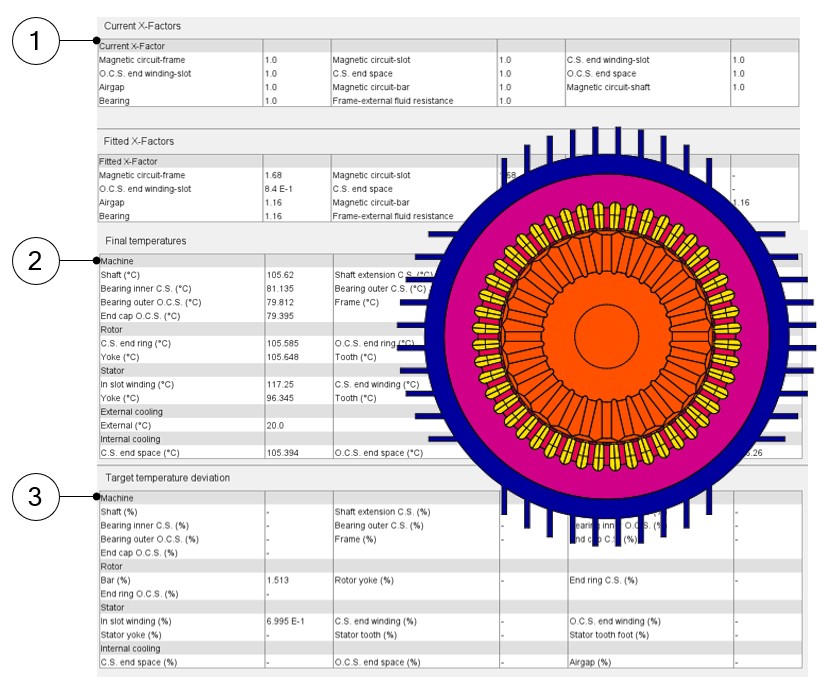Auto calibration of thermal X-Factors
Introduction
The “Characterization – Thermal – Motor & Generator – Fitting” test has been generalized for IMSQ IR and RSM IR machines.
Whatever the machine considered, FluxMotor creates a thermal network based on the machine topology design. However, if needed, it is possible to adjust the thermal resistances with some calibration factors (X-Factors, for external cooling as well as internal cooling) to be consistent with the measurement results, for instance. This has an impact on the resulting temperatures one gets in steady state or transient mode.
The aim of Characterization – Thermal – Motor & Generator – Fitting test is a fully automatic calibration for the X-factors. A set of target temperatures is proposed; the test output is the set of X-Factors to be applied for reaching the targeted temperatures.
Targeted temperatures and X-Factors
The aim of this dialog box is to collect the targeted temperatures to be reached. They are defined at each main node of the internal thermal network. See the illustration below.
 |
|
| List of targeted temperatures and list of the calibration factors (X-Factors) to be considered. Example of an IMSQ machine | |
| 1 | Selection of target temperatures |
| 2 | Auto/User mode switches allow you to select the thermal nodes and set the corresponding target temperatures. |
| 3 | Selection of calibration factors (X-Factors) |
| 4 | List of the calibration factors (X-Factors) to be considered during the fitting process. By default, all the X-Factors are considered for the fitting process. The user must select the ones that must not be considered while operating the process. Set the value to No when the corresponding X-Factors must not be considered during the process. |
 |
|
| Illustration of results. Example of a RSM machine | |
| 1 | Calibration factors – Initial and final values are displayed. |
| 2 | Final temperatures resulting from the fitting process. |
| 3 | Resulting deviation between the initial temperature values and the final ones. This allows us to evaluate the impact of the fitting process. |